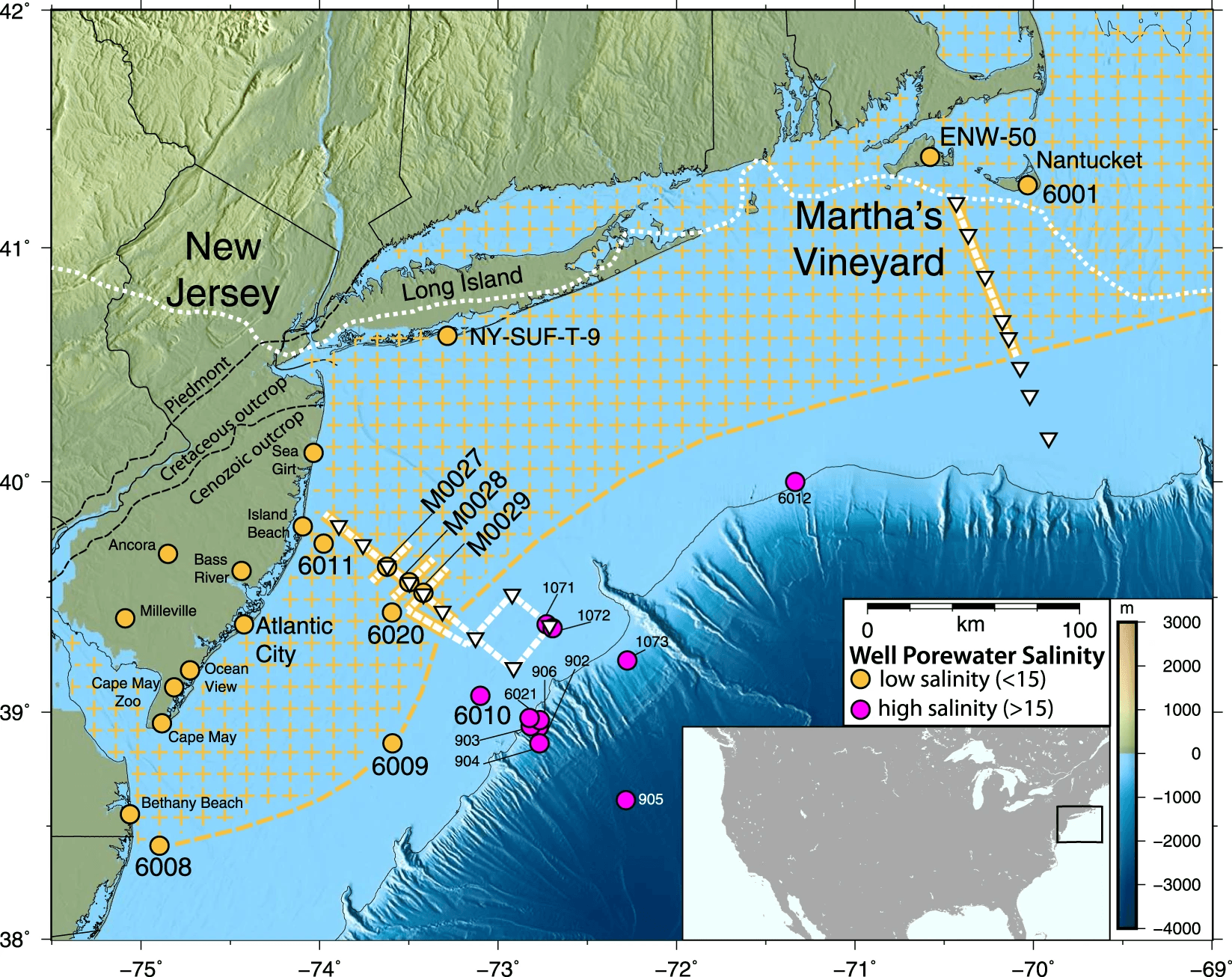New research has identified a mysterious freshwater aquifer located beneath the ocean floor of the Atlantic Ocean. The new research sheds more light on Earth’s evolution, and how there are many things we have yet to learn about our planet.
The discovery which shocked scientists at Columbia University was the result of a new survey of the seafloor off the U.S. Northeast coast. The team’s findings were published in Scientific Reports.
According to the team of scientists working on this survey, the mysterious freshwater aquifer appears to be the largest of this type on Earth, as it measures from the coast of Massachusetts to New Jersey, while extending out 50 miles to the edge of the continental shelf.
If the freshwater lake existed on Earth’s surface, it would span across 15,000 square miles. The new study suggests that this is not the only hidden deposit of fresh water, but that there could be many more around the world waiting to be found. These reservoirs of water could be particularly useful to arid areas that are threatened to run out of fresh water.
“We knew there was fresh water down there in isolated places, but we did not know the extent or geometry,” lead author Chloe Gustafson, a PhD. candidate at Columbia University’s Lamont-Doherty Earth Observatory, said in statement. “It could turn out to be an important resource in other parts of the world.”
To derive the results, the team used electromagnetic waves to map the water. The hidden water is trapped in the porous sediments which are located beneath the Atlantic Ocean under the continental shelf. The first signs of water begin at 600 feet below the ocean floor, going down to 1,200 feet, the researchers wrote. According to the team, there are 670 cubic miles of fresh water located there.
While it’s still unclear how the mysterious freshwater aquifer got trapped beneath the Atlantic Ocean, researchers have a theory.
“Some 15,000 to 20,000 years ago, toward the end of the last glacial age, much of the world’s water was locked up in mile-deep ice; in North America, it extended through what is now northern New Jersey, Long Island and the New England coast. Sea levels were much lower, exposing much of what is now the underwater U.S. continental shelf. When the ice melted, sediments formed huge river deltas on top of the shelf, and fresh water got trapped there in scattered pockets. Later, sea levels rose.”
The researchers also noted that if the water from the outer parts of the reservoir were withdrawn, it wouldn’t be usable for drinking water yet. The team noted that the water would need to be desalinated for most uses. However, the process of making the water pure would cost much less than processing seawater.
“We probably don’t need to do that in this region, but if we can show there are large aquifers in other regions, that might potentially represent a resource” in places like southern California, Australia, the Mideast or Saharan Africa, study co-author and geophysicist Kerry Key said in a statement.





